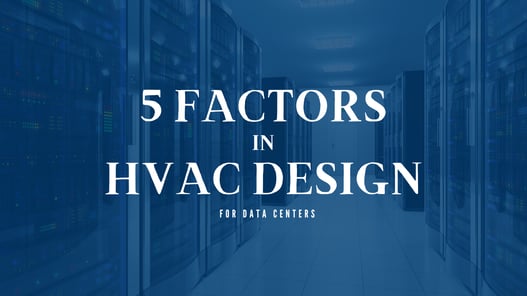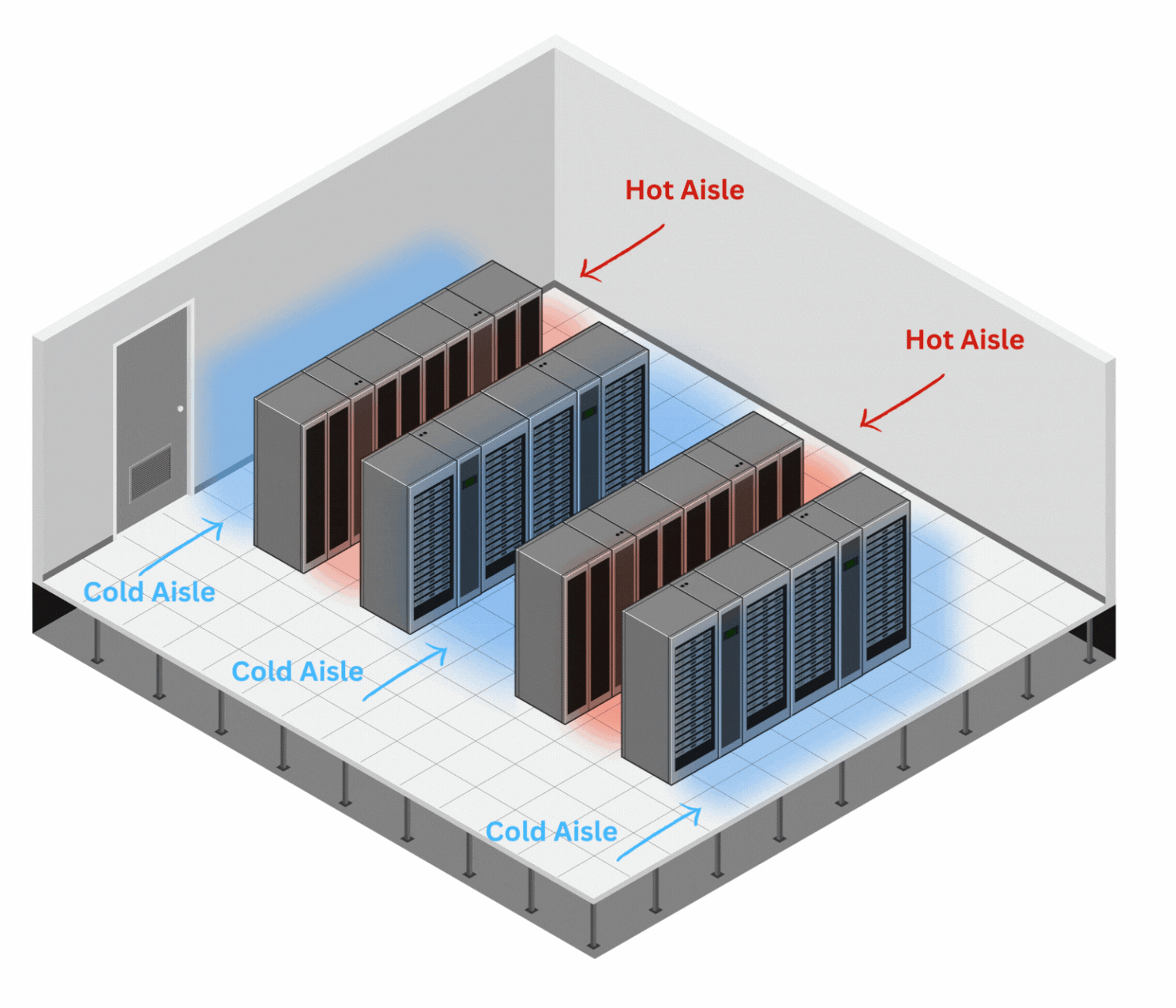
The primary reason behind the heat production in data centers is the immense power they consume to run their operations. As data centers house numerous high-performance servers, networking equipment, storage devices, and other critical infrastructure, a substantial amount of electrical power is required. Unfortunately, a significant portion of this power is dissipated into the surrounding air as heat.
The design of the HVAC system in data centers is crucial for maintaining optimal operating conditions and ensuring the reliability and longevity of IT equipment. Several factors influence the design of the HVAC system, and understanding these factors is essential for efficient and effective data center cooling.
Here are the five main factors that impact HVAC design for data centers:
Type of IT Equipment:
The type of IT equipment housed in the data center plays a significant role in HVAC design. Different types of equipment generate varying levels of heat, and the HVAC system must be designed to handle the specific heat load. High-density servers, for example, require more cooling capacity compared to traditional servers. Therefore, understanding the heat output characteristics of the IT equipment is crucial in determining the appropriate HVAC design.
Rack-Mount Servers:
Rack-mount servers are the traditional option widely used for many years. These servers are designed to be mounted in standard server racks, occupying a fixed amount of space. Here are some key points about rack-mount servers:
Benefits:
- Versatility: Rack-mount servers are highly versatile and can accommodate various hardware configurations, including multiple processors, storage drives, and expansion cards.
- Scalability: These servers offer excellent scalability, allowing businesses to add or replace hardware components per their evolving needs easily.
- Easy maintenance: With their standardized form factor, rack-mount servers are relatively easy to maintain and upgrade. Components can be replaced individually without affecting the entire system.
Blade Servers:
Blade servers represent a more compact and modular alternative to traditional rack-mount servers. These servers are housed in blade enclosures and share common resources. Let's delve into the benefits and limitations of blade servers:
Benefits:
- High density: Blade servers are known for their high-density design, allowing businesses to accommodate more computing power within a smaller physical footprint.
- Reduced power consumption: Blade servers consume less power compared to rack-mount servers, resulting in potential energy savings and lower operational costs.
- Simplified cable management: Blade servers feature a centralized cable management system, making it easier to maintain a clean and organized server environment.
Related: Cleaning Air Filters
IT Equipment Configuration:
The configuration of IT equipment within the data center also affects the HVAC design. The layout and arrangement of servers, racks, and cabinets impact the airflow patterns and heat dissipation. Proper airflow management is essential to prevent hot spots and maintain uniform cooling throughout the data center. The HVAC system must be designed to support the specific equipment configuration and ensure efficient cooling.
To ensure the proper functioning of the HVAC system, it is recommended to follow the Hot Aisle-Cold Aisle layout as suggested by ASHRAE.

The Hot Aisle-Cold Aisle layout involves arranging the IT equipment racks in rows, with the cabinet fronts facing the cool aisle. This configuration allows for better airflow management and efficient temperature control within the data center.
By aligning the IT equipment racks in this manner, the cool air is directed towards the front of the cabinets, ensuring that the equipment receives a sufficient supply of cool air for proper cooling. The hot air exhaust from the equipment is then directed towards the hot aisle, where the HVAC system can effectively extract it
Related: The Benefits of Maintenance Contracts
Service Levels:
The required service levels of the data center influence the HVAC design. Different service level agreements (SLAs) may dictate specific temperature and humidity ranges that need to be maintained. Critical applications or sensitive equipment may require higher cooling redundancy and precision. The HVAC system must be designed to meet these service level requirements, ensuring that the data center operates at optimal conditions without any compromise to performance and reliability.
It is important to include provisions for servicing and maintenance in the design phase of the project, including:
- A focus on durability, reliability, and maintainability when selecting equipment
- Components and long-lead items available locally
- Access to all HVAC components without interruption
- Delivery and installation openings for the largest component
- Licensed local service technicians trained by the manufacturer of the A/C unit in your computer room, such as Site Support Services.
Costs and Budget:
Cost considerations and budgetary constraints are also important factors in HVAC design for data centers. Designing and operating an HVAC system can have significant costs, including equipment, installation, maintenance, and energy consumption. The HVAC design needs to strike a balance between meeting the cooling requirements and staying within the allocated budget. Energy-efficient HVAC solutions and innovative cooling technologies can help optimize costs while maintaining the required cooling capacity.
Energy Efficiency and Green Standards:
In today's environmentally conscious world, energy efficiency and adherence to green standards are vital considerations in HVAC design for data centers. High energy consumption by cooling systems can have a substantial environmental impact and contribute to increased operational costs. Designing an energy-efficient HVAC system that complies with green standards, such as LEED certification, can reduce electricity consumption, lower carbon footprint, and promote sustainability.
The HVAC design for data centers is influenced by several factors, including the type of IT equipment, IT equipment configuration, service levels, costs and budget, and energy efficiency and green standards. By carefully considering these factors, data center operators can ensure an effective and efficient HVAC system that provides optimal cooling, enhances equipment performance, and minimizes environmental impact.
Need Assistance from a Professional HVAC Service Provider? Contact TATE's Expert Team
You can hire our expert team from TATE. We have over 99 years of experience providing solutions in the Mid-Atlantic region. Want to learn more about TATE and our services? If yes, get in touch with Tate’s experts and the experts at our Site Support Services division. Our team is ready to help 24/7.
